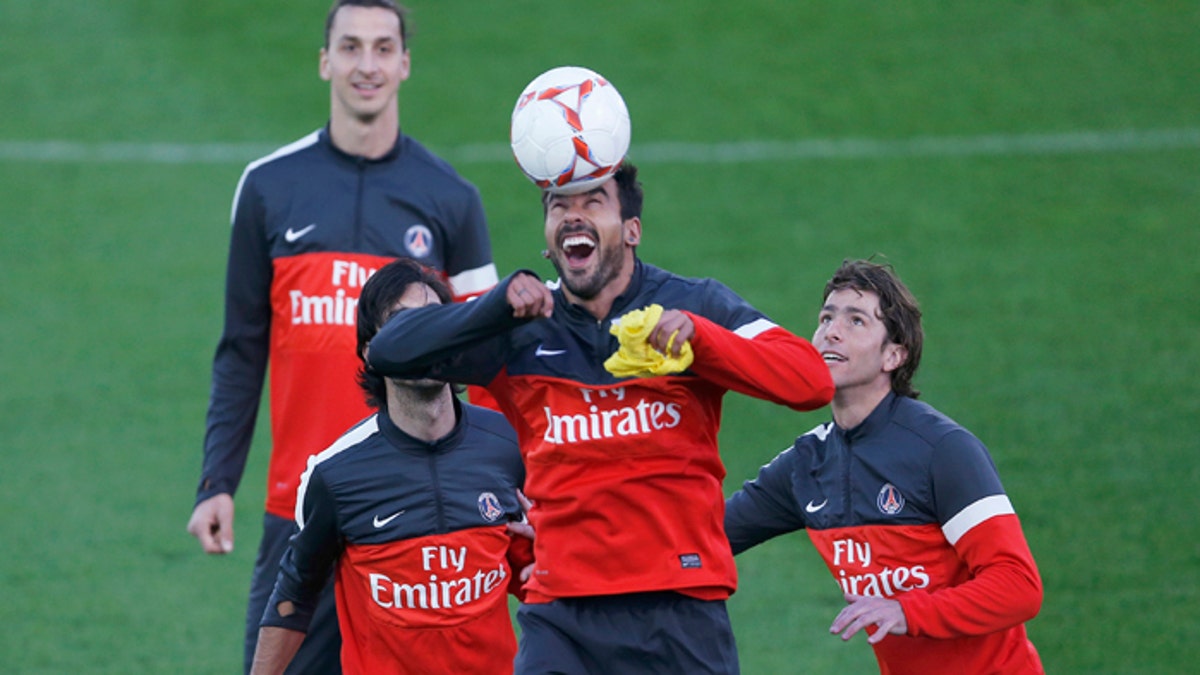
Paris Saint-Germain's Ezequiel Lavezzi heads the ball next as teammates Javier Pastore (L), Zlatan Ibrahimovic (2nd L) and Maxwell (R) watch during a training session. (REUTERS/Fadi Al-Assaad)
New research into the impact of a soccer ball when players "head" the ball suggests that the forces can be substantial and that headgear designed for the sport doesn't appear to mitigate those forces much.
In addition, researchers found that the more inflated the ball, the greater the acceleration factor when it strikes the head.
Scientists at Imperial College London examined the force of ball-to-head contact in soccer because it has been rarely studied compared with other types of head contact in the world's most popular sport, such as player head-to-head contact.
The rules of soccer prohibit players from trying to control the ball with their arms and hands.
Experiments measured the forces and acceleration of a regulation, adult-size-5 ball propelled repeatedly at a magnesium dummy-like head at 18 meters per second, which is considered the average speed a ball is kicked by nonprofessional players. As a comparison, the researchers measured forces exerted on the dummy head by punches from amateur boxers.
The data showed the average forces of a soccer-ball header were similar to those exerted on the head by punches from amateur boxers, according to Daniel Plant, a researcher in Imperial's department of mechanical engineering, who presented the data Friday at a helmet-safety science conference at the university.
In studies with soccer balls, there was little difference with or without headgear, and in the case of one type of headgear, there was evidence the force on the head was greater when a helmet was worn than when not, according to the data.
